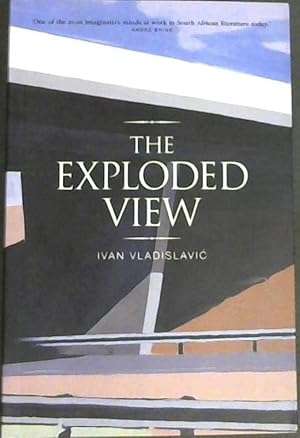
The Exploded View - Ivan Vladislavić (Johannesburg interest)
Check my rate
| Main centres: | 1-3 business days |
| Regional areas: | 3-4 business days |
| Remote areas: | 3-5 business days |

| Main centres: | 1-3 business days |
| Regional areas: | 3-4 business days |
| Remote areas: | 3-5 business days |
Published by Random House, 2004, softcover, 200 pages, condition; as new.
A quartet of stories revolving around four men in Johannesburg: a statistician employed on the national census, an engineer out on the town with his council connections, an artist with an interest in genocide and curios, and a contractor who erects billboards on building sites; each tries to make sense of a changed world after the demise of apartheid.
Illustrations in the magazine Popular Mechanics as recalled by one of the characters in Ivan Vladislavić's four connected stories. In engineering draftsmanship, this is known as the exploded view. But the metaphorical relevance to post-Apartheid South Africa should be obvious: a fractured society consciously reassembled, but where the constituent parts have not yet fully joined. Rather than tackling the subject head-on, Vladislavić explores it obliquely, through brief moments in the lives of four male characters, in the same suburb of Johannesburg at roughly the same time. Although the four do not know each other, their stories are connected by the same landmarks, the same restaurants and housing developments, and the same themes, justifying the book's status as a novel.
I said four characters, but really they are three plus one: three marginalized white men, and one successful black artist, whom I will return to later. All are approaching forty. The three whites are a statistician working for the Census in the first story, a sanitary engineer inspecting a new development in the second, and a contractor who erects billboards on building sites in the fourth. All emerge more or less as failures. The statistician lusts vainly after one of the women he is interviewing, but the racial subtext is muted here; she herself is also white, an Afrikaner, simply more at ease in the new society. The climax of the story with the engineer comes at a dinner with some black associates who talk mainly among themselves in Sotho, "switching back to English occasionally to include him"; the story is neatly framed by scenes in an hotel room that feels luxurious at the start and shabby at the end of it. The last story ends with an incident that had been glimpsed from a distance in the first, where racial fear and the naked threat of violence enter the novel for the first time.
I have not read such a compelling account of the ambivalence of art since Patrick White's great work .